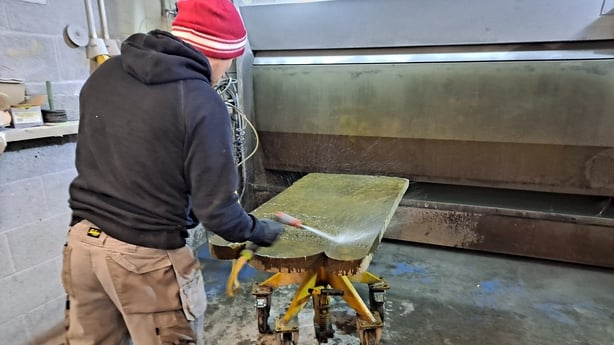The remains of more than 1,600 people who died during the Cholera Pandemic of 1832 have been reinterred in Dublin’s Glasnevin Cemetery.
Their remains were recovered between 2015 and 2016 during excavation work as part of the the Luas Cross City project.
Around 22,000 Irish people lost their lives during the Cholera Pandemic between March and December 1832. Around 6,000 of the deaths occurred in Dublin.
It was the second cholera pandemic of the century, the first occurred between 1817 and 1823.
Due to its highly infectious nature, many victims were buried in mass graves.
During the excavation works more than 19,000 individual bones were discovered in a laneway between Grangegorman and Broadstone.
They are believed to be patients of the former Richmond Female Penitentiary in Grangegorman which was used as the ‘Dublin Cholera Hospital’ from April 1832.
Records suggest that its gardens came into use as burial grounds in May 1832 after a previous site at Bully’s Acre in Kilmainham quickly reached capacity as the pandemic hit Ireland.
In 2010, the Environmental Impact Assessment for the Luas Cross City Project identified Grangegorman Laneway as a potential graveyard, but there was some uncertainty about its exact location.
Records indicated that the burials may have been disturbed, exhumed and reinterred in a patch of ground after three acres of the Penitentiary site was purchased by the Midland Great Western Railway in the 1870s for the expansion of their Broadstone railyard.
In 2015, archaeological test excavations from Luas Cross city identified two trenches containing the thousands of human remains
Post-excavation analysis over five years confirmed they were the remains of 1,617 victim of the Cholera Pandemic. However, individual identification was not possible due to the age and nature of the remains.
This morning, a ceremony was held in Glasnevin Cemetery in Dublin to unveil a plaque at the site where the victims’ remains have been reinterred.

A headstone that was recovered along the remains has also been located on the spot they were buried.
Transport Infrastructure Ireland said it was important to all involved in the project that the remains were reinterred in a suitable resting place.
“The excavation of the cemetery was an extremely difficult task for all involved, particularly due to the nature of human tragedy the works represented,” the statement said.
“From the outset it has been the wish of TII to ensure these individuals were treated with the utmost respect.
“Through this formal burial in consecrated ground, it is the intention of TII and Glasnevin Cemetery Trust that the dignity of these individuals is restored, that their loss is never forgotten, and that they may now truly rest in peace.”
